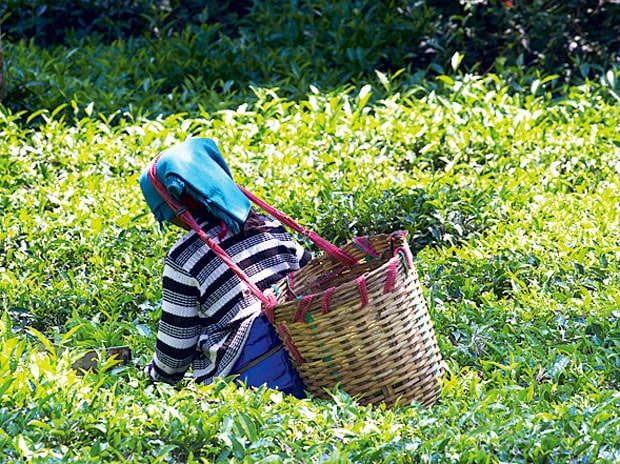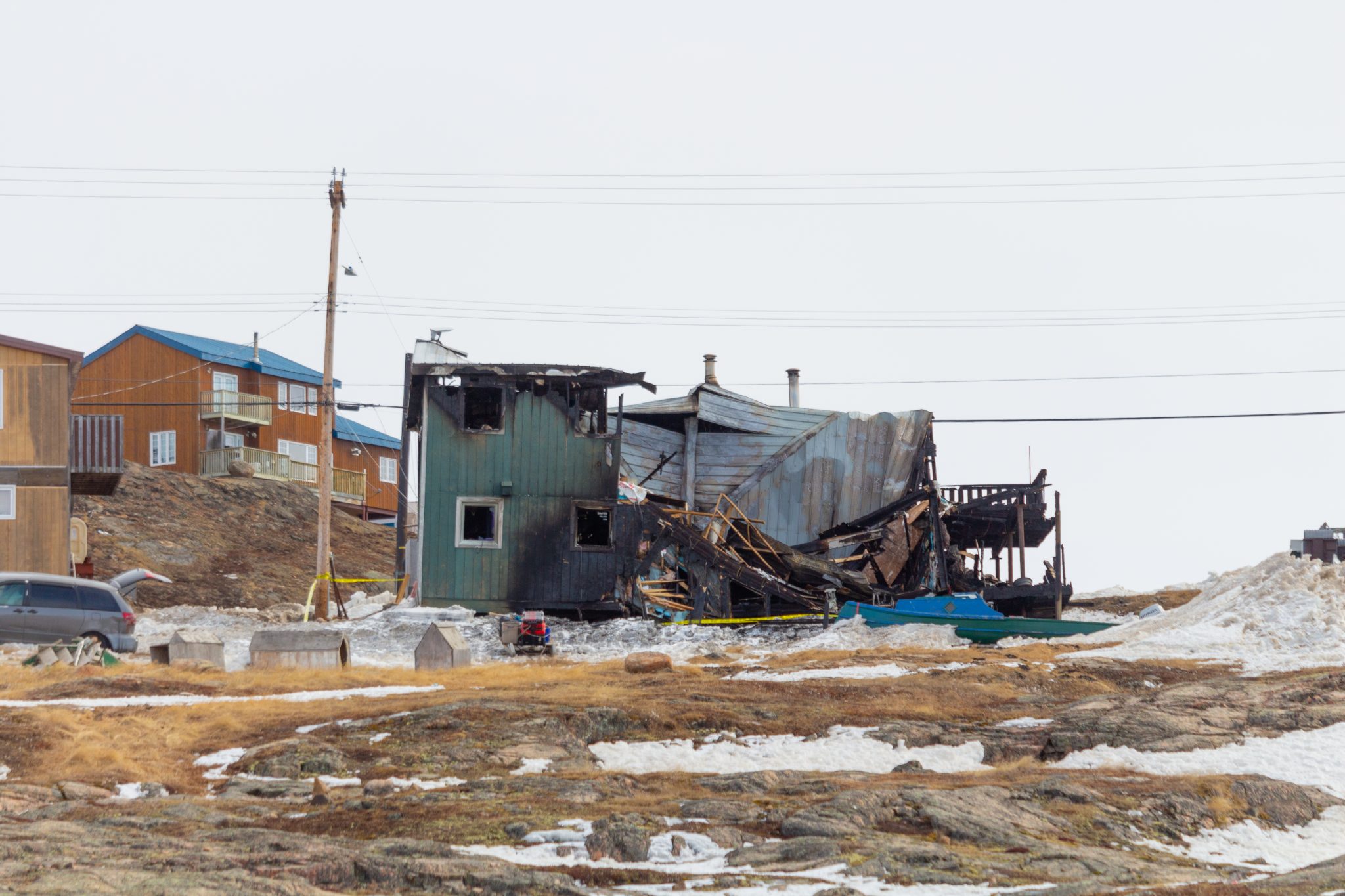Is Darjeeling Tea Production Facing A Crisis?

Table of Contents
The Impact of Climate Change on Darjeeling Tea Gardens
The delicate ecosystem of Darjeeling's tea gardens is highly susceptible to climate change. Shifting weather patterns are dramatically impacting tea yield and quality, posing a significant threat to Darjeeling tea production.
Shifting weather patterns and their effect on tea yield.
Unpredictable rainfall is a major concern. Erratic monsoons, characterized by both intense downpours and prolonged droughts, severely stress tea bushes, hindering their growth and reducing the quantity of harvestable leaves. Similarly, rising temperatures and increasingly frequent frost events damage tender shoots, impacting both the quantity and quality of the final product. Some estimates suggest a yield reduction of up to 20% in certain years due to these unpredictable weather events. For example, the 2016 frost significantly impacted the spring flush, leading to substantial losses for many tea estates. Adapting cultivation practices to these unpredictable conditions remains a significant challenge for Darjeeling tea growers. This includes exploring drought-resistant varieties and implementing innovative irrigation techniques.
Pest and disease outbreaks exacerbated by climate change.
Warmer temperatures and increased humidity create ideal conditions for the proliferation of pests and diseases affecting tea plants. The prevalence of red spider mites, aphids, and various fungal diseases has increased significantly in recent years. These outbreaks not only diminish the yield but also compromise the quality of the tea, impacting its delicate flavor profile and market value. Sustainable pest control, minimizing the use of harmful chemicals while protecting the environment and the health of tea workers, is crucial but challenging in the face of increasing pest pressure.
Labor Shortages and the Aging Workforce in Darjeeling Tea Industry
The Darjeeling tea industry faces a severe labor shortage, exacerbated by an aging workforce and a lack of interest among younger generations.
The decline in younger generation's interest in tea cultivation.
Young people are increasingly migrating to urban areas in search of better job opportunities and higher wages, leading to a shrinking workforce in the tea gardens. The arduous nature of tea cultivation, coupled with relatively low wages, makes it an unattractive career option for many young people. This exodus of young workers creates a significant skills gap, threatening the continuity of traditional tea-making practices.
Wages and working conditions in Darjeeling tea gardens.
Low wages and challenging working conditions contribute to the labor shortage. Tea pluckers often work long hours under physically demanding conditions, for relatively low pay, making it difficult to attract and retain a sufficient workforce. Labor disputes and strikes are not uncommon, further highlighting the tensions within the industry. Improving wages and working conditions, along with implementing measures to improve worker safety and provide better healthcare facilities, is crucial for attracting and retaining a skilled workforce.
Competition from Other Tea-Producing Regions
Darjeeling tea faces growing competition from other tea-producing regions globally, many of which offer comparable quality at significantly lower prices.
The rise of other tea-producing regions and their impact on Darjeeling tea's market share.
Countries like Kenya, Sri Lanka, and India (outside of Darjeeling) produce large volumes of tea at lower costs, putting pressure on Darjeeling's market share. These regions benefit from economies of scale and often employ more mechanized harvesting and processing techniques, leading to lower production costs. This price competition directly impacts Darjeeling tea's premium pricing strategy.
Maintaining Darjeeling tea's unique identity and premium pricing.
Maintaining the unique identity and premium pricing of Darjeeling tea is essential for its survival. Effective marketing strategies emphasizing the tea's distinct flavor profile, its heritage, and sustainable production methods are vital to ensure continued consumer demand. Strict quality control and measures to prevent counterfeiting are also crucial to protect the brand’s reputation and value.
Sustainable Practices and the Future of Darjeeling Tea
Adopting sustainable practices and investing in research and technology are crucial for ensuring the long-term viability of Darjeeling tea production.
Implementing sustainable agriculture practices to mitigate climate change impacts.
Transitioning to organic farming, implementing water conservation techniques, and employing climate-resilient tea varieties are vital steps toward mitigating the impact of climate change. Government initiatives and support for sustainable agricultural practices are crucial for facilitating this transition. Successful examples of sustainable tea farming in Darjeeling demonstrate that it is possible to balance environmental protection with economic viability.
Investing in research and technology to improve productivity and resilience.
Investing in research and development is essential to develop new, climate-resilient tea varieties that can withstand the changing climatic conditions. Furthermore, the adoption of technology in tea cultivation, processing, and marketing can enhance productivity, efficiency, and traceability, enhancing competitiveness. Collaboration between researchers, farmers, and industry stakeholders is essential to foster innovation and drive positive change.
Conclusion: Securing the Future of Darjeeling Tea Production
The challenges facing Darjeeling tea production – climate change, labor shortages, and competition – are significant and interconnected, threatening the very future of this iconic beverage. The potential crisis necessitates a multifaceted approach, including the adoption of sustainable agricultural practices, investment in research and technology, improvement of working conditions and wages to secure a skilled workforce, and effective marketing strategies to maintain market demand. By working collaboratively, the stakeholders within the Darjeeling tea industry can ensure its continued success and protect the unique heritage of this world-renowned tea. Learn more about how you can support sustainable Darjeeling tea production and help prevent a crisis.

Featured Posts
-
 Kentucky Derby 2025 Pace Analysis Key Horses And Their Running Styles
May 05, 2025
Kentucky Derby 2025 Pace Analysis Key Horses And Their Running Styles
May 05, 2025 -
 Raiwaqa House Fire Results In One Fatality
May 05, 2025
Raiwaqa House Fire Results In One Fatality
May 05, 2025 -
 West Bengal Braces For Heatwave Four Districts Issued Warning
May 05, 2025
West Bengal Braces For Heatwave Four Districts Issued Warning
May 05, 2025 -
 Dr Ethan Chois Return In Chicago Med Season 10 Episode 14
May 05, 2025
Dr Ethan Chois Return In Chicago Med Season 10 Episode 14
May 05, 2025 -
 Bof A Says Dont Worry About Stretched Stock Market Valuations
May 05, 2025
Bof A Says Dont Worry About Stretched Stock Market Valuations
May 05, 2025
Latest Posts
-
 Kanye West Bianca Censori Reunite Spanish Dinner Date Sparks Speculation
May 05, 2025
Kanye West Bianca Censori Reunite Spanish Dinner Date Sparks Speculation
May 05, 2025 -
 Tioga Downs 2025 Racing Season What To Expect
May 05, 2025
Tioga Downs 2025 Racing Season What To Expect
May 05, 2025 -
 Colonial Downs Virginia Derby Details Announced By Stone
May 05, 2025
Colonial Downs Virginia Derby Details Announced By Stone
May 05, 2025 -
 Tioga Downs A Look Ahead To The 2025 Racing Season
May 05, 2025
Tioga Downs A Look Ahead To The 2025 Racing Season
May 05, 2025 -
 Stones Upcoming Announcement Virginia Derby At Colonial Downs
May 05, 2025
Stones Upcoming Announcement Virginia Derby At Colonial Downs
May 05, 2025
